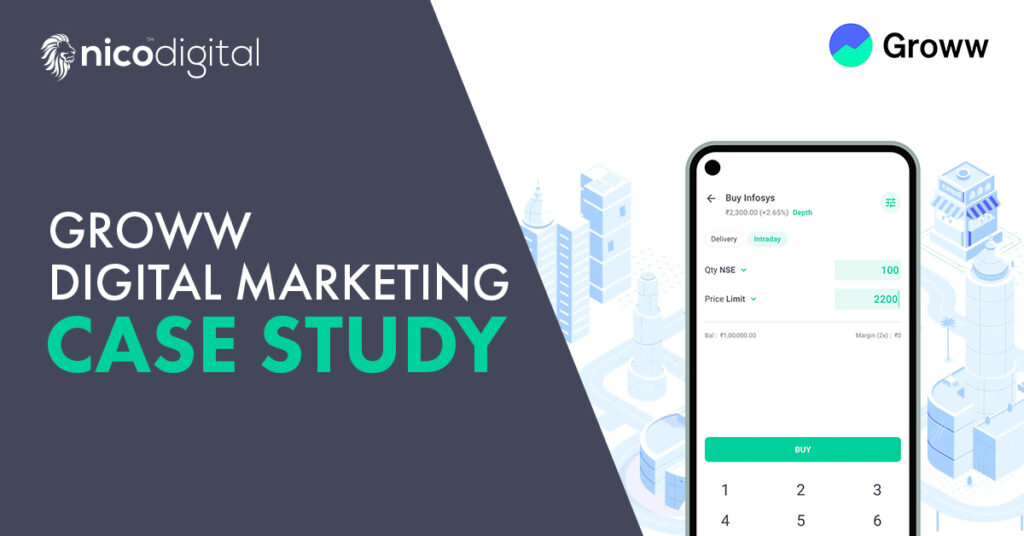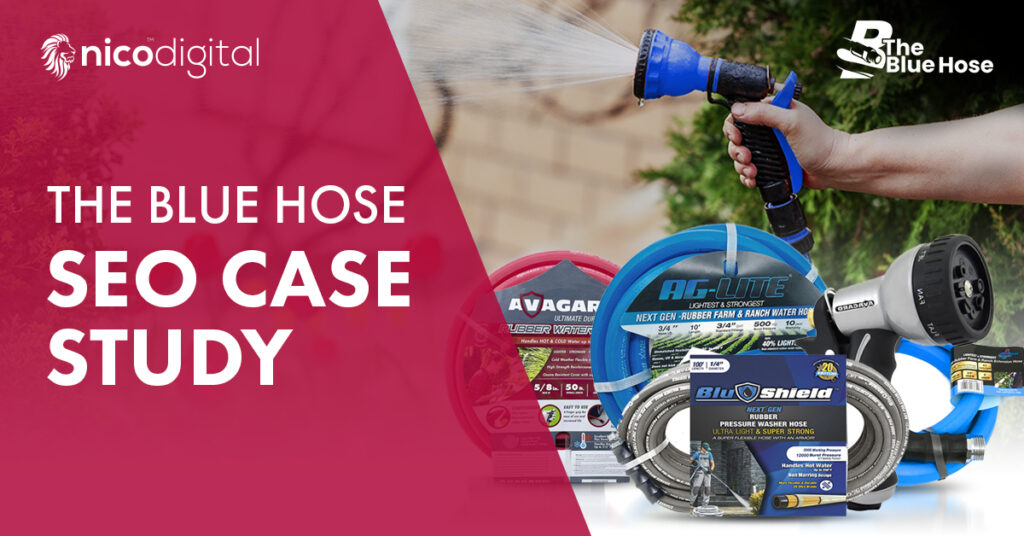
You have opened your e-commerce store. You have successfully listed your products and have started attracting some visitors. But there’s one challenge—you’re not getting enough sales!
Well, every e-commerce owner has faced this hurdle at least once in their online selling journey.
Getting more traffic is on the wish list of every e-commerce owner. But, how do you actually attract visitors to your site without spending a huge chunk of your budget on marketing and running ads?
Well, the solution lies in e-commerce SEO.
Additionally, you can raise sales, draw in organic traffic, and raise your product page ranks without going over budget on advertisements by carefully choosing high-intent keywords.
Sounds good, right?
Well, in this guide, we’ll break down everything you need to know about keyword research, product page optimization, and SEO strategies to help your online store rank higher and convert more visitors into customers.
Add to cart? Yes, please.
What is e-commerce SEO?
E-commerce SEO is all about bringing more visibility to your online store on Google and other search engines. It means optimizing product pages, category pages, and the website itself so that it attracts more attention via search engine results.
When done right, e-commerce SEO can bring organic traffic. This means you can get visitors without paying for it. And the higher you rank, the more people will click on your result and visit your online store.

of all e-commerce traffic
originates from Google’s
organic search.
Source: Reboot
However, not all ranking improvements are measured equally. By default on Google, the top 3 results get the most amount of traffic. Thus, getting a page from #5 to #4 will be more beneficial than getting a page from #8 to #7.
Also, Google’s first search results page shows only 10 results.; And since only less than 1% of viewers click on the 2nd page of Google, getting a page from #11 to #10 is kind of a big deal.
What are keywords in e-commerce SEO?
Keywords are important since they encompass the words and phrases that people are looking for related to a product or information on search engines. Search engines determine which pages to display on the search results based on the keywords provided.
At first, these little phrases might seem of little or no significance. But when you understand their true value for ranking your site, you will be tempted to delve deeper into the keyword learning realm.

Keywords in e-commerce SEO
are the search terms customers
use to find products online.
For example, if you sell organic skincare products, your potential customers might search for terms like “best organic face cream” or “natural skincare for dry skin.”
Thus, by optimizing your store with the right keywords, you can increase your chances of appearing in relevant searches.
The Benefits of Using Keywords in E-Commerce SEO
The first result on a Google search page gets around 27.6% of all the clicks. Thus, in short, SEO matters for e-commerce sites.
And how do you properly incorporate SEO in your online store? By strategically using the right keywords to optimize your product pages, categories, and content, which ensures your store ranks higher and attracts more potential buyers.
Thus, if you have an online store, here are some undeniable benefits that keywords can offer.
 Higher Search Rankings
Higher Search Rankings
Well-optimized keywords help your e-commerce store appear at the top of search engine results, increasing visibility.
 Increased Organic Traffic
Increased Organic Traffic
Targeting the right keywords drives relevant shoppers to your site without you relying on paid ads.
 Better Conversion Rates
Better Conversion Rates
Using high-intent keywords ensures you attract visitors who are ready to buy, leading to more sales.
 Improved User Experience
Improved User Experience
Optimized keywords make it easier for customers to find what they’re looking for. This ultimately enhances navigation and engagement.
 Enhanced Brand Authority
Enhanced Brand Authority
Ranking for industry-relevant keywords establishes your store as a trusted source in your niche.
 Cost-Effective Marketing
Cost-Effective Marketing
Unlike paid ads, SEO-driven traffic from keywords is sustainable and continues to deliver results long-term.
Now that you have a brief idea of the benefits of using keywords for your online store, let’s get to the part where you learn how to properly research keywords and incorporate them into your website
Your Steps to Create A Winning E-commerce
Strategy Using Keywords
Using keywords for e-commerce websites need not be a Herculean task if you know the correct steps to go about it.
However, with so many aspects of keywords, from researching to search volumes and types, many people feel overwhelmed and unsure where to begin.
And if you are among them, then fear not.
Read on to find out a simple guide that will help you get visitors to your online store, improve your rankings, and ultimately boost your sales—all without feeling lost in the process.
1. Keyword Research: Finding the Right Search Terms
Keyword research is the foundation of SEO. You need to find relevant keywords that your customers are searching for.
Moreover, any kind of e-commerce campaign should start with keyword research. Because, without keywords you can’t also optimize both your product and category pages.
There are also certain factors that you should consider when searching for keywords. These include the following that are highlighted below.
 Search Volume
Search Volume
This refers to how often a specific keyword is searched for within a particular time frame (usually monthly). High search volume means there is a large percentage of audience who are looking for that keyword. This suggests that content around it has the potential for greater visibility and traffic.
 Competition
Competition
Competition measures the number of other businesses or websites trying to rank for the same keyword. If there are many websites competing for that keyword, it would be quite difficult to rank for it. Understanding competition helps establish whether a specific keyword is worth focusing on or alternatives such as less competitive long-tail keywords would be more appropriate.
 Keyword Difficulty
Keyword Difficulty
When it comes to ranking on a specific keyword, keyword difficulty is in place to inform you just how difficult that may be. This will be based on a number of factors such as domain authority, existing websites on that keyword, backlinks, and SEO strategies in general. If the keyword difficulty is high, you will need to have a more powerful SEO strategy compared to lower difficulty which is comparatively easier to rank for.
 User Intent
User Intent
User intent refers to the goal behind a search query. There are 4 main types of user intent –
i. Informational
Users are looking for answers or information. By targeting these keywords, you can create helpful content and build authority in your field. An example of an informational intent may be “how to choose the best running shoe?”
ii. Transactional
Here, users want to buy something or take action. E-commerce sites should focus on these keywords to drive sales. An example would be “buy running shoes online.”
iii. Navigational
Users are trying to reach a specific site or page. Branded keywords help users find your site directly. An example would be “Nike official site.”
iV. Commercial
Users are researching or comparing options before buying. These keywords are valuable for e-commerce businesses. An example would be “best shoes for running”
Below are some simple steps to find keywords.
• Use Google Autocomplete – Type a product name in Google and see what suggestions appear.

• Check “People Also Ask” – This section in Google results gives insight into common queries.

• Check “People Also Ask” – This section in Google results gives insight into common queries.
You can also search on Amazon to check for specific keywords that you can use. All you need to do is enter a product name in Amazon’s search bar and look at the autocomplete suggestions. These are actual search terms that customers use, which makes them relevant for your product listings.
You can also check the product titles and descriptions of best-selling items in your category to find common keywords that top sellers are using.
A great way to find keyword ideas is to use Google Keyword Planner to generate keyword ideas for your site.
For example, if you are selling running shoes, then you can use GKP to see related terms that people are searching for.
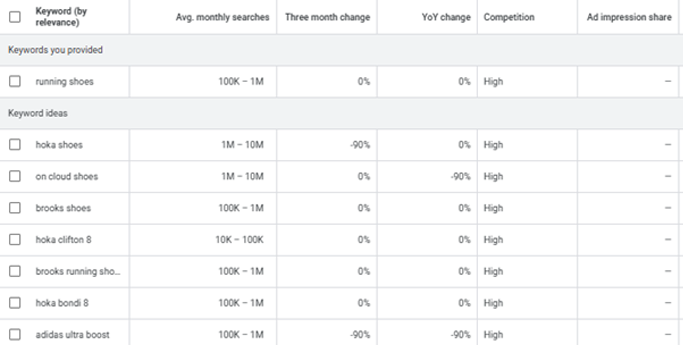
Then you can decide on the type of keywords you want to target, which are discussed below in brief.
• Short-tail Keywords – Broad, high-competition terms (e.g., “running shoes”).
• Long-tail Keywords –More specific, low-competition terms (e.g., “best running shoes for beginners”).
• Product-specific Keywords –Includes brand and product name (e.g., “Nike Air Max 270 review”).
2. Keyword Targeting and Optimizing your Pages
Optimizing your pages for the keywords you want to target is important in order to rank for them.
But how do you optimize your pages with that particular keyword? Well, here’s one trick we are revealing to you.
Search for a particular keyword you are interested in ranking for. Then look at the top 10 results for that keyword. See, if your competitor pages are optimized for that keyword.
For example, search for “running shoes without laces”.
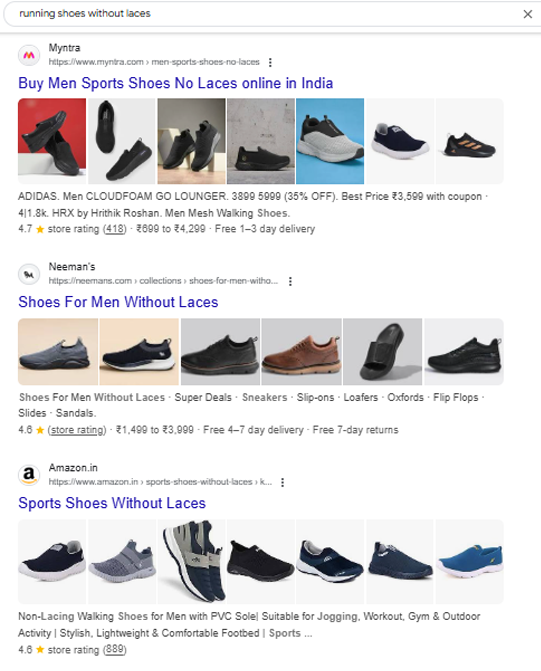
Notice how some of the pages aren’t exactly optimized for the keyword you searched?
So, how exactly is this helpful? Well, it lets you know if you have an advantage.
If the pages you see in the top 10 aren’t exactly optimized for that keyword, then you may have an opportunity to outrank them!
Thus, if you sell running shoes without laces, then you could optimize one of your category pages with that keyword.
This can be an excellent opportunity for you to outrank your competitors.
3. Research competitor keywords
If you can find out the keywords your competitors rank for, then you can get a whole bunch of keywords for your e-commerce site.
You can use Semrush’s Organic Research tool for this step.
For example, if you are selling bamboo towels, then follow the steps to research your competitor keywords.
Search on Google for the term “bamboo towels”. Then copy the link of any one of the websites that show up in the search results and paste it into Ahrefs Organic Search tool.
You now get to see the list of keywords that people are searching for.
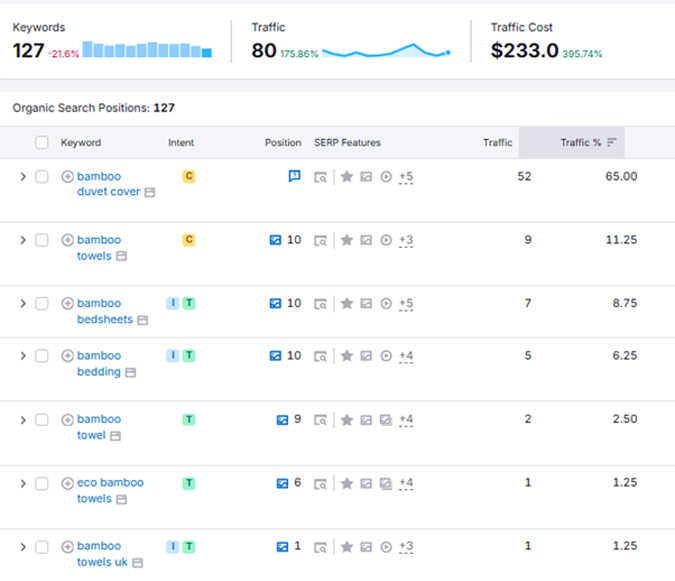
You can also filter the metrics like keyword difficulty, search volume and intent. Now go ahead and add these keywords to your product pages.
4. Keyword placement for Maximum Impact
Once you have your keywords, placing them strategically in your store’s content will help improve rankings. Below are the common places where you should place your keywords for maximum chances of crawlability.
a) Product Titles
Include primary keywords in product titles. For example, instead of “Face Cream,” use “Organic Face Cream for Sensitive Skin – Hydrating & Anti-Aging.” This will signal to Google that your product is relevant to specific search queries. This will help in driving more targeted traffic to your page.
b) Product Descriptions
Write detailed, keyword-rich descriptions that highlight product benefits. Avoid keyword stuffing as this is deemed as a negative practice by Google and you may be penalized. Try to make the content natural and engaging.
c) Meta Titles and Meta Descriptions
These appear in search results, so they should include important keywords to attract clicks. For example:
Meta Title: “Best Organic Face Cream | Hydrating & Anti-Aging Formula”
Meta Description: “Discover our top-rated organic face cream for sensitive skin. Deep hydration with all-natural ingredients. Order now!”
d) URLs
Try to use clean, keyword-rich URLs.
Some examples of what URLs to use and what to avoid are given below.
![]() www.yourstore.com/organic-face-cream
www.yourstore.com/organic-face-cream![]() www.yourstore.com/product12345
www.yourstore.com/product12345
e) Category Pages
Optimize category pages with relevant keywords. For instance, if you sell running shoes, your category page could be titled “Best Running Shoes for Men & Women.”
f ) Blog Content
Creating blog posts with keywords can help drive organic traffic. Topics like “How to Choose the Best Running Shoes for Your Feet” can attract potential customers.
g) Alt Text for Images
Search engines can’t “see” images, but they can read alt text. Use descriptive, keyword-rich alt text for images.
For example, the alt text given below is correct, and SEO friendly.
![]() “Organic face cream for dry skin – 100% natural ingredients”
“Organic face cream for dry skin – 100% natural ingredients”
However, the one below is generic and won’t contribute to your SEO efforts.![]() “IMG1234.jpg”
“IMG1234.jpg”
h ) Headings and Subheadings
Use keywords in H1, H2, and H3 tags to improve readability and SEO.
5: Avoid Keyword Stuffing
Some so-called SEO experts indulge in a practice called keyword stuffing. This involves using certain keywords over and over again with the hopes of getting rankings. This not only makes the content sound unnatural but also negatively impacts rankings.
Search engines penalise pages that overuse keywords. Instead, you should focus on writing naturally while integrating keywords smoothly.
An example of keyword stuffing is highlighted below.
![]() “Our organic face cream is the best organic face cream for organic face cream lovers who want organic face cream.”
“Our organic face cream is the best organic face cream for organic face cream lovers who want organic face cream.”
Better approach:
![]() “Our organic face cream hydrates and nourishes sensitive skin with all-natural ingredients.”
“Our organic face cream hydrates and nourishes sensitive skin with all-natural ingredients.”
6: Use keywords for Voice Search Optimization
People nowadays are increasingly using voice features, and using voice search assistants like Siri and Alexa to search for queries.
Like, instead of typing “best running shoes”, they might ask, “What are the best running shoes for long-distance running?”
Thus, if you want to optimize your site for voice search, then consider implementing the tips below.
 Focus on Conversational and Long-tail Keywords
Focus on Conversational and Long-tail Keywords
Voice searches mimic our natural speech patterns. Thus, your keyword strategy should include longer, and more conversational phrases.
These long-tail keywords have lower competition and higher intent. This makes them valuable for conversions.
For example, instead of targeting:
![]() “organic face cream”
“organic face cream”
Try targeting:
![]() “Which organic face cream is best for dry skin?”
“Which organic face cream is best for dry skin?”
 Use Question-Based Keywords
Use Question-Based Keywords
When we search on voice search, we often tend to use questions. Like “who,” “what,” “where,” “when,” “why,” and “how” queries.
Thus, if you want to capture these searches, incorporate question-based keywords into your content.

of searches are phrased as a question.
Source: Reboot
Some examples of these are:
• How to choose the best wireless headphones?
• What’s the best skincare routine for sensitive skin?
Also, try to add FAQ sections to blog posts, product pages and landing pages, as this can help you target voice queries more effectively.
• Optimize for featured snippets
Google often uses voice search answers from featured snippets. These are the short, highlighted text at the top of search results.
So, to increase your chances of ranking for a featured snippet, try incorporating the following.
• Answer common questions clearly and concisely (ideally in 40-60 words).
• Use bullet points or numbered lists for structured responses.
• Include the primary keyword near the start of the answer.
An example of a featured snippet-friendly answer is given below.
Question: How do I clean leather shoes?
Answer: To clean leather shoes, follow these steps:
Step 1 – Wipe off dirt with a soft cloth.
Step 2 – Use a leather cleaner or mild soap with water.
Step 3 – Apply a leather conditioner to maintain softness.
Step 4 – Let them air dry away from direct sunlight.
7. Track your Keywords’ Performance
Once you are done implementing your keyword strategy, it’s time to get tracking. This step is important because it helps you understand what is working and what needs improvement.
Also, monitoring your keyword rankings helps you understand which of your search terms are driving traffic, conversions and sales.
Below are some ways in which you can track your keyword performance.
• Use Google Search Console
Google Search Console helps you see which keywords are bringing visitors to your store.
It provides you with insights like:
• Click-through rates (CTR)
• Search rankings
• Impressions (how often your page appears in search results)
If a keyword has high impressions but low CTR, you may need to improve your title and meta description to make them more compelling.
• Analyze Traffic with Google Analytics
Google Analytics helps track organic traffic and user behavior. You can see which keywords bring the most visitors and how they interact with your site.

of marketers say SEO is more effective with Google Analytics insights.
Source: Moz
If a keyword is driving traffic but not leading to sales, you may need to optimize your product pages or call-to-actions.
• Use SEO Tools for Deeper Insights
Platforms like Ahrefs, SEMrush, and Ubersuggest help track keyword rankings, search volume, and competition levels. These tools also show how your keywords perform against competitors.
Final Thoughts
Having a solid keyword strategy has the power to level up your e-commerce game. Thus, you should focus on finding the right type of keywords, place them naturally in important areas and also continuously track their performance.
Oh, and don’t forget to implement the strategies we listed above. They will help you create a more SEO-friendly website which will attract the right customers you have always been searching for.
And if the steps mentioned above seem too overwhelming, or if you simply don’t have the time and resources to implement them, don’t worry, we have you covered.
At Nico Digital, we don’t just find keywords, we uncover opportunities.
From high-intent keywords to voice and local SEO, we help your e-commerce store rank higher and convert better.
Let’s unlock your store’s full potential. Get in touch today for a comprehensive SEO audit!











